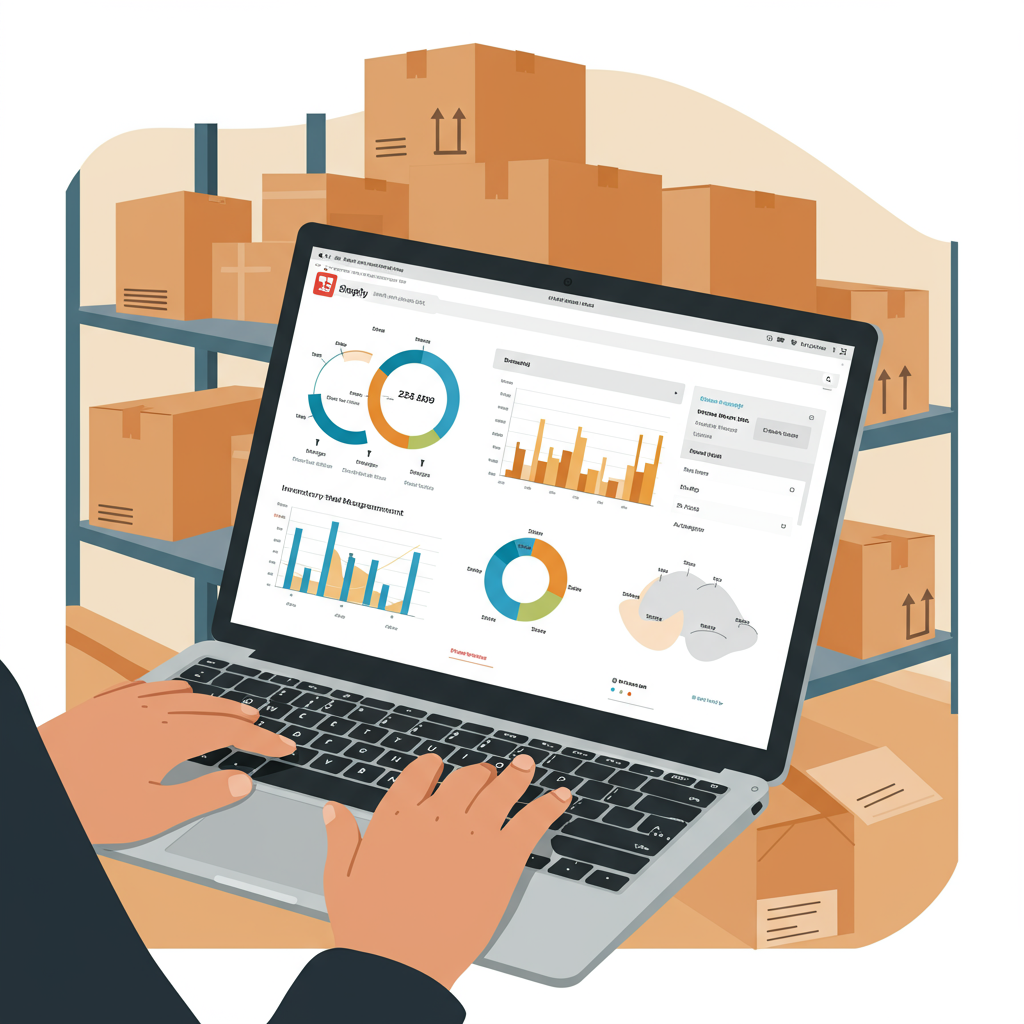How I Found the Best Tools to Streamline My E-commerce Operations
As a Shopify merchant, I quickly learned that managing inventory isn’t just about counting products. It’s the heartbeat of your business, directly impacting cash flow, customer satisfaction, and ultimately, your profitability.
When I first started, I thought Shopify’s built-in tools would be enough. For a very small operation, they might be. But as my product catalog grew and orders started flowing in, I realized I was spending an inordinate amount of time manually tracking stock.
I faced common problems: overselling items that were out of stock, leading to frustrated customers and cancelled orders. Then there was the opposite issue: holding too much dead stock, tying up capital that could be better used elsewhere.
The manual spreadsheets became a nightmare. Updating stock levels across multiple sales channels, managing returns, and forecasting demand felt like a full-time job in itself, pulling me away from marketing and product development.
That’s when I knew I needed a dedicated solution. I started my quest for the perfect Shopify inventory management app, and let me tell you, the options are vast and can be overwhelming.
My goal was simple: find an app that could automate the tedious tasks, provide real-time insights, and scale with my business. I wanted to reclaim my time and make data-driven decisions.
One of the first features I looked for was **real-time inventory syncing**. This is non-negotiable. If you sell on Shopify, in a physical store, and perhaps on Amazon, you need a single source of truth for your stock levels.
Next, **multi-location support** became crucial. As I expanded into a small warehouse, I needed to track inventory across different physical locations seamlessly. This prevents stockouts at one location while another is overstocked.
**Bundling and kitting** capabilities were also high on my list. I often sell products together as a package deal, and manually adjusting stock for each component every time a bundle sold was incredibly inefficient.
**Purchase order management** transformed how I dealt with suppliers. Being able to generate, track, and receive purchase orders directly within the inventory system saved me countless hours and improved my supplier relationships.
Robust **reporting and analytics** were essential for me to understand my sales trends, identify slow-moving items, and forecast future demand accurately. This insight is gold for strategic planning.
I also considered **barcode scanning** integration. While not every business needs it, for those with a high volume of physical goods, it drastically speeds up receiving, picking, and packing processes.
Finally, **integrations** with other tools like my accounting software (QuickBooks), shipping platforms (ShipStation), and POS system were vital for a truly unified workflow.
After extensive research and trying out several demos, I narrowed down my choices. Let me share some of the apps that stood out to me and why.
**Stock Sync** was one of the first I explored. It’s incredibly powerful for bulk editing and syncing product data, not just inventory. If you have complex product feeds or need to integrate with external suppliers’ stock levels, this app is a lifesaver.
I found it particularly useful for updating prices and stock from dropshippers or wholesale suppliers directly into my Shopify store. Its flexibility with various file formats was a huge plus.
For a period when I considered manufacturing some of my own components, I looked into **Katana MRP**. This app is a game-changer for businesses that deal with raw materials, work orders, and production planning.
Katana provides a clear overview of your manufacturing process, from sales orders to finished goods, ensuring you have the right materials at the right time. It’s definitely for more complex operations than just retail.
Another comprehensive solution I evaluated was **QuickBooks Commerce (formerly TradeGecko)**. This platform is designed for growing businesses, especially those with B2B sales or wholesale channels.
QuickBooks Commerce offers advanced features like multi-currency support, detailed customer pricing tiers, and robust reporting that goes beyond basic inventory tracking. It’s a full-fledged ERP for small to medium businesses.
While I didn’t personally implement **SKULabs**, I know merchants who swear by it for warehouse management. If you’re dealing with high order volumes and need efficient picking, packing, and shipping workflows, SKULabs excels.
It integrates seamlessly with various shipping carriers and provides real-time tracking, making the fulfillment process much smoother. It’s a serious tool for serious fulfillment needs.
Choosing the right app really comes down to your specific business needs, size, and budget. Don’t just pick the most popular one; assess your pain points and match them with the app’s core strengths.
Consider your current volume, your growth projections, and how complex your supply chain is. A simple app might suffice now, but will it scale with you in two years?
When you do decide, take your time with implementation. Data migration can be tricky, so plan it carefully. Train your team thoroughly, and don’t be afraid to start with a trial period to ensure it’s the right fit.
Implementing a robust inventory management app was one of the best decisions I made for my Shopify store. It freed up my time, reduced costly errors, and gave me the confidence to grow.
It’s an investment that pays dividends in efficiency, accuracy, and peace of mind. No more late-night spreadsheet updates for me!
What do you think about this article? Have you used any of these apps, or do you have other recommendations? I’d love to hear your thoughts.






